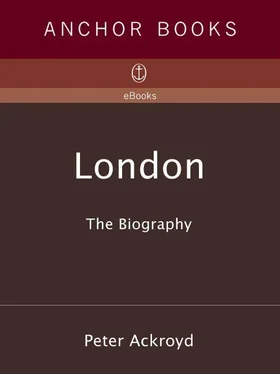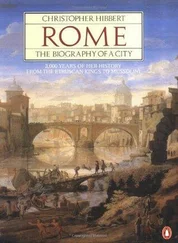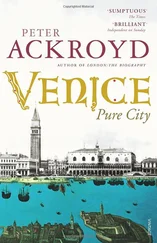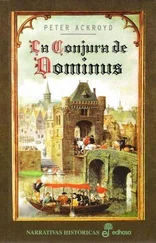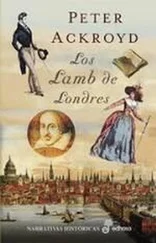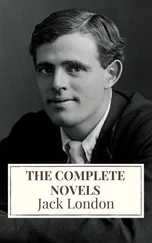Peter Ackroyd - London - The Biography
Здесь есть возможность читать онлайн «Peter Ackroyd - London - The Biography» весь текст электронной книги совершенно бесплатно (целиком полную версию без сокращений). В некоторых случаях можно слушать аудио, скачать через торрент в формате fb2 и присутствует краткое содержание. Год выпуска: 2000, ISBN: 2000, Жанр: Биографии и Мемуары, на английском языке. Описание произведения, (предисловие) а так же отзывы посетителей доступны на портале библиотеки ЛибКат.
- Название:London: The Biography
- Автор:
- Жанр:
- Год:2000
- ISBN:9781400075515
- Рейтинг книги:5 / 5. Голосов: 1
-
Избранное:Добавить в избранное
- Отзывы:
-
Ваша оценка:
- 100
- 1
- 2
- 3
- 4
- 5
London: The Biography: краткое содержание, описание и аннотация
Предлагаем к чтению аннотацию, описание, краткое содержание или предисловие (зависит от того, что написал сам автор книги «London: The Biography»). Если вы не нашли необходимую информацию о книге — напишите в комментариях, мы постараемся отыскать её.
London: The Biography — читать онлайн бесплатно полную книгу (весь текст) целиком
Ниже представлен текст книги, разбитый по страницам. Система сохранения места последней прочитанной страницы, позволяет с удобством читать онлайн бесплатно книгу «London: The Biography», без необходимости каждый раз заново искать на чём Вы остановились. Поставьте закладку, и сможете в любой момент перейти на страницу, на которой закончили чтение.
Интервал:
Закладка:
Material evidence of an association with Troy itself, and with the region of Asia Minor in which that ancient doomed city resided, can be found elsewhere. Diogenes Laertius identified the Celts with the Chaldees of Assyria; indeed the famous British motif comprising the lion and the unicorn may be of Chaldean origin. Caesar noted, with some surprise, that the Druids made use of Greek letters. In the Welsh Triads there is a description of an invading tribe who have travelled to the shores of Albion, or England, from the region of Constantinople. It is suggestive, perhaps, that the Franks and Gauls also claimed Trojan ancestry. Although it is not altogether out of the question that a tribe from the region of fallen Troy migrated to western Europe, it is more likely, perhaps, that the Celtic people themselves had their origins in the eastern Mediterranean. The legend of London, as a new Troy, is therefore still able to claim some adherents.
At the beginning of any civilisation there are fables and legends; only at the end are they proved to be accurate.
One token of Brutus and his Trojan fleet may still remain. If you walk east down Cannon Street, on the other side from the railway station, you will find an iron grille set within the Bank of China. It protects a niche upon which has been placed a stone roughly two feet in height, bearing a faint groove mark upon its top. This is London Stone. For many centuries it was popularly believed to be the stone of Brutus, brought by him as a deity. “So long as the stone of Brutus is safe,” ran one city proverb, “so long shall London flourish.” Certainly the stone is of great antiquity; the first reference to it was discovered by John Stow in a “fair written Gospel book” once belonging to Ethelstone, an early tenth-century king of the West Saxons, where certain lands and rents are “described to lie near unto London stone.” According to the Victorian County History it originally marked the very centre of the old city, but in 1742 was taken from the middle of Cannon Street and placed within the fabric of St. Swithin’s Church opposite. There it remained until the Second World War; although a German bomb entirely destroyed the church in 1941, London Stone remained intact. It is constructed of oolite which, as a perishable stone, cannot be assumed to have survived since prehistoric times. Yet it has been granted a charmed life.
There is a verse by the fifteenth-century poet, Fabyan, which celebrates the religious significance of a stone so pure that “though some have it thrette … Yet hurte had none.” Its actual significance, however, remains unclear. Some antiquaries have considered it to be a token of civic assembly, connected with the repayment of debts, while others believe it to be a Roman milliarium or milestone. Christopher Wren argued, however, that it possessed too large a foundation for the latter purpose. A judicial role is more likely. In a now forgotten play of 1589, Pasquill and Marfarius , a character remarks: “Set up this bill at London Stone. Let it be doone sollemly with drom and trumpet” and then again “If it please them these dark winter nights to stikke uppe their papers uppon London Stone.” That it became a highly venerated object is not in doubt. William Blake was convinced that it marked the site of Druid executions, whose sacrificial victims “groan’d aloud on London Stone,” but its uses were perhaps less melancholy.
When the popular rebel Jack Cade stormed London in 1450, he and his followers made their way to the Stone; he touched it with his sword and then exclaimed: “Now is Mortimer”-this was the name he had assumed-“lord of this city!” The first mayor of London, in the late twelfth century, was Henry Fitz-Ailwin de Londonestone. It seems likely, therefore, that this ancient object came somehow to represent the power and authority of the city.
It sits now, blackened and disregarded, by the side of a busy thoroughfare; over and around it have flowed wooden carts, carriages, sedan chairs, hansom cabs, cabriolets, hackney cabs, omnibuses, bicycles, trams and cars. It was once London’s guardian spirit, and perhaps it is still.
It is at least a material remnant from all the ancient legends of London and of its foundation. For the Celtic people these narratives comprised the glory of a city once known as “Cockaigne.” In this place of wealth and delight the traveller might find riches and blessed happiness. This is the myth that established the context for later legends, such as those of Dick Whittington, as well as those unattributable proverbs which describe London’s streets as “paved with gold.” Yet London gold has proved more perishable than London Stone.
CHAPTER 2. The Stones
A section of the original London Wall , with medieval additions, can still be seen by Trinity Place just north of the Tower of London; part of the Tower itself was incorporated within the fabric of the wall, demonstrating in material form William Dunbar’s claim that “Stony be thy wallys that about thee standis.” It was almost ten feet wide at its base, and more than twenty feet in height; besides these relics of the wall by Trinity Place can be seen the stone outline of an inner tower which contained a wooden staircase leading to a parapet which looked east across the marshes.
From here the spectral wall, the wall as once it was, can be traversed in the imagination. It proceeds north to Cooper’s Row, where a section can still be seen in the courtyard of an empty building; it rises from a car park in the basement. It goes through the concrete and marble of the building, then on through the brick and iron of the Fenchurch Street Station viaduct until an extant section rises again in America Square. It is concealed within the basement of a modern building which itself has parapets, turrets and square towers; a strip of glazed red tiling bears more than a passing resemblance to the courses of flat red tiles placed in the ancient Roman structure. For a moment it is known as Crosswall and passes through the headquarters of a company named Equitas. It moves through Vine Street (in the car park at No. 35 is a security camera on the ancient line of the now invisible wall), towards Jewry Street, which itself follows the line of the wall almost exactly until it meets Aldgate; all the buildings here can be said to comprise a new wall, separating west from east. We find Centurion House and Boots, the chemist.
The steps of the subway at Aldgate lead down to a level which was once that of late medieval London but we follow the wall down Duke’s Place and into Bevis Marks; near the intersection of these two thoroughfares there is now part of that “ring of steel” which is designed once more to protect the city. On a sixteenth-century map Bevis Marks was aligned to the course of the wall, and it is so still; the pattern of the streets here has been unchanged for many hundreds of years. Even the lanes, such as Heneage Lane, remain. At the corner of Bevis Marks and St. Mary Axe rises a building of white marble with massive vertical windows; a great golden eagle can be seen above its entrance, as if it were part of some imperial standard. Security cameras once more trace the line of the wall, as it leads down Camomile Street towards Bishopsgate and Wormwood Street.
It drops beneath the churchyard of St. Botolph’s, behind a building faced with white stone and curtain-walling of dark glass, but then fragments of it arise beside the church of All Hallows-on-the-Wall, which has been built, in the ancient fashion, to protect and bless these defences. The modern thoroughfare here becomes known, at last, as London Wall. A tower like a postern of brown stone rises above 85 London Wall, very close to the spot where a fourth-century bastion was only recently found, but the line of the wall from Blomfield Street to Moorgate largely comprises late nineteenth-century office accommodation. Bethlehem Hospital, or Bedlam, was once built against the north side of the wall; but that, too, has disappeared. Yet it is impossible not to feel the presence or force of the wall as you walk down this straightened thoroughfare which can be dated to the later period of the Roman occupation. A new London Wall then opens up after Moorgate, built over the ruins of the Second World War. The bombs themselves effectively uncovered long-buried remnants of the ancient wall, and stretches both of Roman and medieval origin can still be seen covered with grass and moss. But these old stones are flanked by the glittering marble and polished stone of the new buildings that dominate the city.
Читать дальшеИнтервал:
Закладка:
Похожие книги на «London: The Biography»
Представляем Вашему вниманию похожие книги на «London: The Biography» списком для выбора. Мы отобрали схожую по названию и смыслу литературу в надежде предоставить читателям больше вариантов отыскать новые, интересные, ещё непрочитанные произведения.
Обсуждение, отзывы о книге «London: The Biography» и просто собственные мнения читателей. Оставьте ваши комментарии, напишите, что Вы думаете о произведении, его смысле или главных героях. Укажите что конкретно понравилось, а что нет, и почему Вы так считаете.
